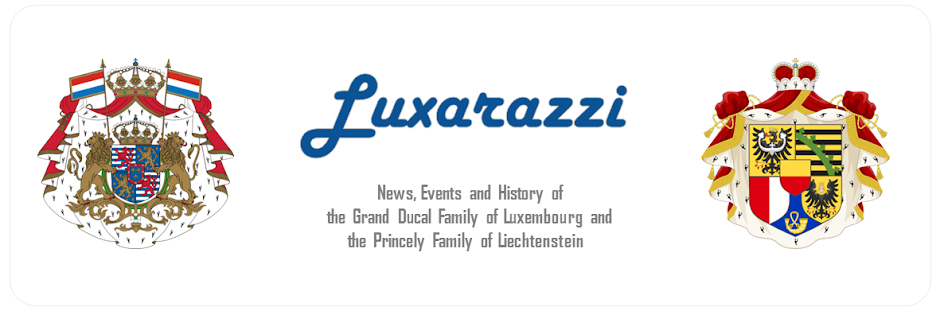Did you know that it is not Santa Claus, Father Christmas or someone else with a name along these lines who brings the Christmas presents to both Luxembourg and Liechtenstein? No, it is the Chrëschtkand (or Chrëschtkëndchen) in the Grand Duchy and the Christkind in the Principality.
 |
| Probably the most famous depiction of a Christkind, the one who opens the Nürnberg Christmas market (though it probably looks nothing like most people would imagine it). (Photo: Stadt Nürnberg) |
As you have probably guessed by the similarity in their spellings, both the Chrëschtkand and the Christkind are actually the same traditional gift bringer in the German-speaking countries and regions of (the Catholic parts of) Germany and Switzerland as well as Austria, Liechtenstein, Luxembourg and Italy (South Tyrol), as well as in parts of the former Austro-Hungarian empire such as the Czech Republic, Croatia, Slovakia, Hungary and Upper-Silesia in Poland. (And Wikipedia says a few other countries but I'm not sure - can you enlighten us? Tell us in the comment section below!)
Literally meaning 'christ child', the Christkind doesn't really look like baby Jesus. While it is usually imagined as a angelic child with blond locks, nobody can tell what it really looks like as the 'christ child' brings the presents while nobody watches - and I can tell you from my own experience, your parents will also tell you that when try to spot it, it won't come. And while you could thus think that the inventor of the Christkind was a person who simply had enough of dressing up as Santa Claus, the history actually goes much further back. In fact, all the way to Martin Luther, the Protestant reformer. (Yes, we'll get to why a Protestant reformer created a Catholic tradition in a moment.)
Back during the Middle Ages, presents weren't actually given on Christmas Day (or Christmas Eve, another tradition of the German-speaking countries) but either on December 6, St. Nicholas' Day, or on December 28, the Holy Innocents' Day remembering the massacre of the innocent children. Martin Luther, however, opposed the Catholics' veneration of saints and thus Saint Nicholas. Thus he moved the day of the gift giving to December 24, Christmas Eve, and encouraged for the gift bringer to be the Christkind (or that's what they say, there's no actual prove). It, however, quickly spread throughout the Protestant areas especially of Germany.
But sometime during the 19th century things changed: While Catholics in Germany and other German-speaking countries also started to adopt the Christkind as their gift bringer, many Protestant regions turned to the Weihnachtsmann, a figure very much along the lines of Santa Claus and Father Christmas and thus a secularised version of St. Nicholas. While in the day and age of a famous soft drink company and their old man in a red-and-white-suit, the Christkind, a figure you can't see in person and that will not come and bring presents if you are too curious and try to spot it, has tough competition, it is still the primary gift bringer in Catholic regions of Germany and many other German-speaking countries such as Luxembourg and Liechtenstein.
And this is how it all happens on Christmas Eve: A family either enters the living room, where the Christmas tree has been put up, for the opening of presents when the parents say that they think that the Christkind / Chrëschtkand, who has brought the presents, has left again, or, in some traditions, the departure is announced by the ringing of a small bell, which the parents pretend to have heard or which is secretly done by one of the adults in the family.
And this is how it all happens on Christmas Eve: A family either enters the living room, where the Christmas tree has been put up, for the opening of presents when the parents say that they think that the Christkind / Chrëschtkand, who has brought the presents, has left again, or, in some traditions, the departure is announced by the ringing of a small bell, which the parents pretend to have heard or which is secretly done by one of the adults in the family.
And that leaves us to say:
Happy Christmas to all of you who celebrate it,
schéi Chrëschtdeeg and frohe Weihnachten!
P.S. Pssst, make sure to check back in the coming days, as we will have
a Luxarazzi 101 for you on each of the 12 days of Christmas.
schéi Chrëschtdeeg and frohe Weihnachten!
P.S. Pssst, make sure to check back in the coming days, as we will have
a Luxarazzi 101 for you on each of the 12 days of Christmas.

No comments:
Post a Comment